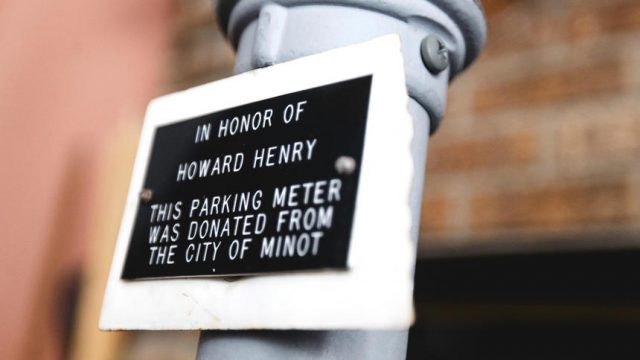North Dakota Lawmakers Missed an Opportunity in Declining to Roll Back Parking Meter Ban

A plaque dedicating the parking meter to Howard Henry that was donated from the city of Minot. (Jesse Trelstad/Grand Forks Herald)
According to this report from John Hageman the fight in the Legislature over North Dakota’s statewide parking ban – the only such policy in America – is finally dead.
Governor Doug Burgum, who was behind legislation to repeal the ban, said he was “disappointed that we’ve missed an overdue opportunity to restore a small, missing piece of local control to political subdivisions and that we’ll continue to be the only state in the nation denying cities a tool that helps support locally owned retailers and boosts economic activity in core business districts.”
Burgum’s right.
[mks_pullquote align=”right” width=”300″ size=”24″ bg_color=”#ffffff” txt_color=”#000000″]Parking meters are an excellent tool which can be used by local governments to drive down traffic and drive up parking availability in congested downtown areas.[/mks_pullquote]
Parking meters are an excellent tool which can be used by local governments to drive down traffic and drive up parking availability in congested downtown areas.
Modern parking meters can do all sorts of cool things. They can detect space occupancy, for instance. They can communicate with one another, and potentially with apps showing where to find available parking spots. They can be programmed to implement congestion pricing schemes based on real time supply and demand.
The congestion pricing thing, in particular, is very useful. According to the Federal Highway Administration, in New York certain neighbors implemented congestion pricing for street parking. What they found was an increase in parking availability and a decrease in traffic congestion.
The latter apparently because fewer people were circling blocks looking for open parking spaces.
Why wouldn’t we want better availability of parking, and less traffic congestion, in addition to a new revenue stream paid directly by people who frequent the downtown areas which could perhaps be used to offset some of the costs of maintaining downtown infrastructure?
The opposition to this seems shortsighted and cynical.




